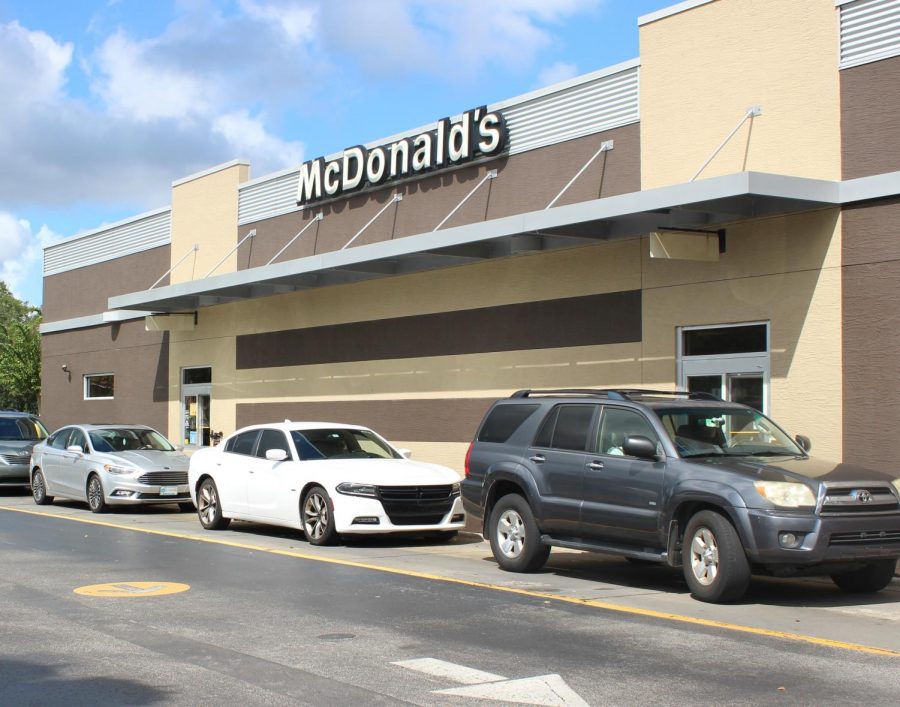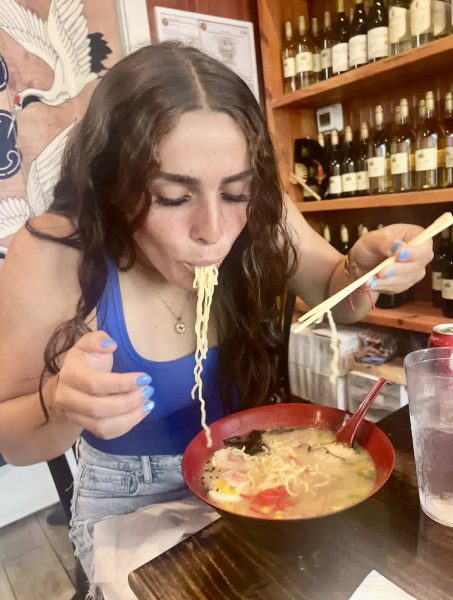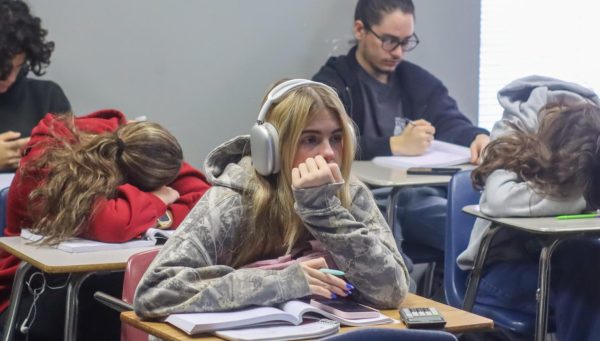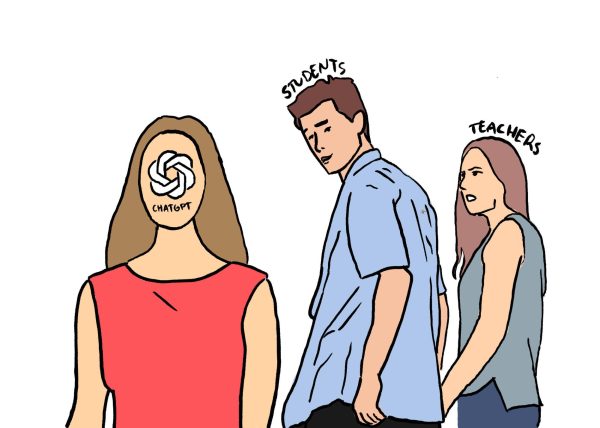COVID with a side of fries
photo by Sophia Canabal
Crowded Drive-Thru at the McDonalds on E. Mitchell Hammock & Lockwood.
Whether someone’s running late and needs a quick meal, or they’re simply craving a burger and fries, fast food restaurants have at one point had everyone’s back. However, since the pandemic reached the U.S., fast food restaurants turned from a convenient pit stop to one of the riskiest places to eat.
The biggest conflict that students face at the drive-thru is whether to sacrifice convenience for caution. Students have been limited in the number of drive-thru orders they make since COVID-19’s reach increased.
“When we could go out we just didn’t want to anymore because it’s so much more of a pain to do that than it used to,” sophomore Sarah Hinnant said. For her, sanitation and precaution overrule convenience, so fast food had to make an unfortunate exit during her quarantine experience.
However, some students are viewing drive-thrus as less of a threat and instead, as an opportunity.
“We’ve been driving through more since the pandemic reached the U.S. since we can’t go into restaurants,” said sophomore, Gwenivere Shaw.
Shaw uses drive-thrus to her advantage and considers them a safe, low contact alternative to dining in. She represents a good portion of people within the U.S. whose consistent orders are keeping fast food franchises from going out of business.
According to a graph published by S.Lock on Statista, the revenue of quick-service restaurants that offer drive-thru service has risen by seven percent since 2019. However, the revenue for restaurants that don’t offer drive-thru services has done the opposite. Since 2019, they’ve experienced a seven percent decrease.
In regards to local restaurants, their lack of revenue has brought bankruptcy and closure for the majority of non-franchised businesses. In Oviedo alone, restaurants such as Peppino’s Ristarante, Cafe Rio, and multiple stores within the Oviedo Mall.
Skyrocketing profits aside, major changes can be seen in how employees carry out their workday and how customers order and receive food. Sanitation stations, much like the ones in place at Hagerty, are common in every restaurant.. Employees can be seen taking the time to put on gloves and change them between orders. Even customers, whether dining in or driving through, take precautions.
Sophomore Rylan Fitzgerald, often orders fast food from home during family events. He and his family still find themselves taking safety measures despite never actually leaving.
“If they are still there when I answer [the door], I wear a mask. In fast food, I would wear a mask in the drive-thru or inside,” Fitzgerald said.
For many, ordering a diet-destroying order of fries at the closest quick-service restaurant means more than a quick pit stop in their busy schedule. Fast food restaurants are an easy way to spend time with family and friends.
“Our sister and I don’t usually have the chance to spend time together because we both run on different schedules,” Hinnant said. “So whenever we go and get food together it’s always a good way to grow closer with each other and the rest of my family.”
While spending the day at home or in quarantine becomes an increasingly common activity, students often find themselves recalling the good times in which they could enter buildings care-free and mask-less.
“One time, at Chick-fil-A, my mom, my sister, and I went in, and my sister was wearing a princess dress,” Shaw recalls. “The cashier thought it was cute and ended up giving her a meal for free”.
While everyone waits for the world to return to “normal” again, students have had to adapt to new risks they have to face every day. The pandemic has allowed uncertainty and caution to rule every student’s mind with an iron fist, and it’s affected everything from family bonding to where they’ll eat their next meal.
Your donation will support the student journalists of Hagerty High School. Your contribution helps us publish six issues of the BluePrint and cover our annual website hosting costs. Thank you so much!









